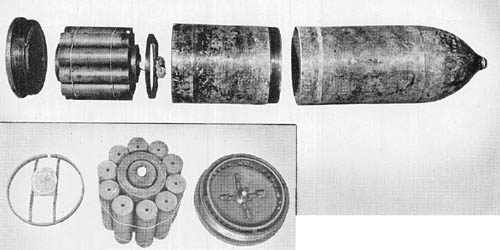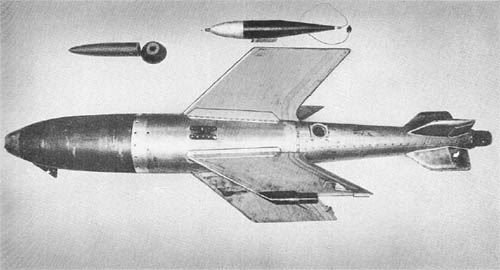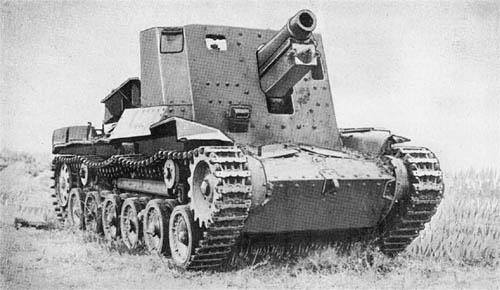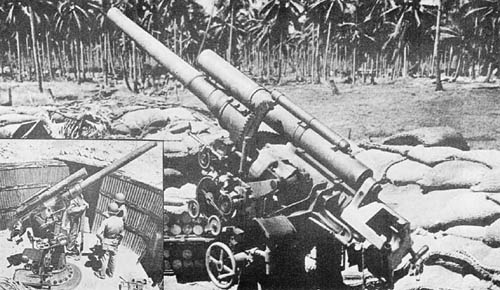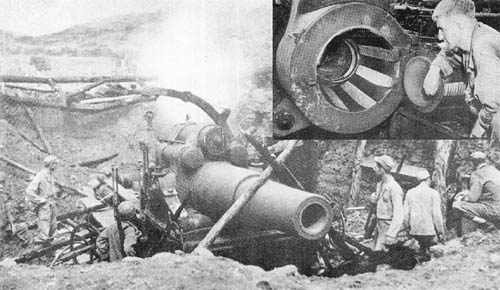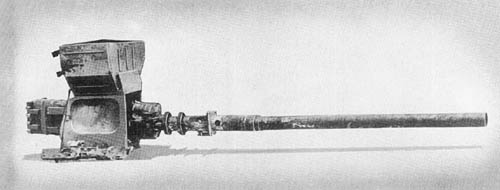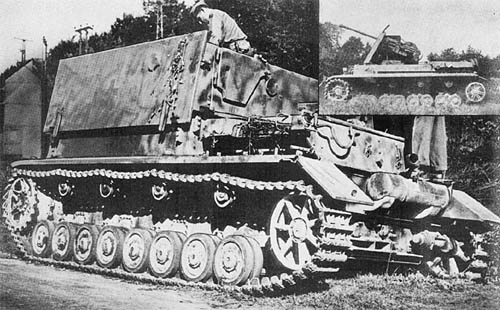
This equipment consists of the standard Pz. Kpfw. IV chassis adapted to mount the 3.7 cm Flak 43. It is essentially an antiaircraft weapon, although the gun may be depressed for use against ground targets.
The superstructure is especially designed for the second purpose. The side and rear walls of the structure are two spaced
The 3.7 cm Flak 43, which has a 360° traverse and 90° elevation, is centrally mounted on a pedestal. It is hung from a single trunnion on the right through which passes the feed and ejection aperture. The monobloc barrel is fitted with a combination muzzle brake and flash hider. Both elevating and traversing handwheels are located to the right of the gun. A hydromatic-spring buffer with variable recoil is situated below the barrel, and two return springs lie side by side above the barrel. A tri-sectional gun shield sloped at 30° to the vertical is provided. The center section is 9 mm thick and two side sections each 6 mm thick. The height of the shield, measured up the slope, is four feet, 3 1/2 inches. The gun is fed horizontally from the left by clips of eight rounds each which are placed on a fixed loading tray.
The muzzle velocity of the 3.7 cm Flak 43 is reported as 2,750 f/s, and its theoretical rate of fire 250 rounds per minute. The ammunition issue laid down per equipment is reported as 1,600 rounds, 1,280 high explosive and 320 armor piercing.
An official German document states that the standard sight for this gun will be the Schwebedornvisier.
SPECIFICATIONS
| Weight | 26 tons (est.) | |
| Length | 19 ft., 4 ins. | |
| Width | 9 ft., 7 ins. | |
| Height | ||
| Ground clearance | 15 ins. | |
| Tread centers | 7 ft., 11 ins. | |
| Ground contact | 11 ft., 6 ins. | |
| Width of track | 15 ins. | |
| Pitch of track | 4 3/4 ins. | |
| Track links | 98 | |
| Fording depth | 3 ft. | |
| Theoretical radius of action | ||
| Roads | 130 miles | |
| Cross-country | 80 miles | |
| Speed | ||
| Roads | 25 m.p.h. | |
| Cross-country | 15 m.p.h. | |
| Armor | ||
| Front plate | 50 mm | |
| Sides | 30 mm | |
| Armament | 3.7 cm Flak 43 | |
| Ammunition (Rds.) | 1,600 | |
| Engine | Maybach HL 120 TRM, 320 hp. | |
| Transmission | Synchromesh—6 speeds forward, 1 reverse. | |
| Steering | Epicyclic, clutch brake | |
| Crew | 7 |
German: p. 32.2 (April 1, 1945)
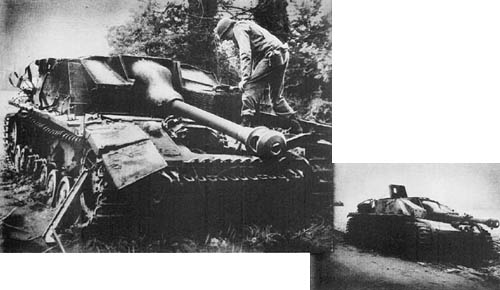
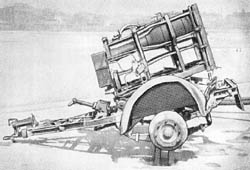 This rocket projector very closely resembles the
This rocket projector very closely resembles the 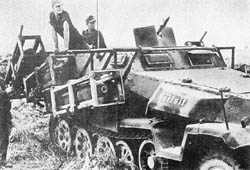 This rocket projector is designed for use on half-tracked armored personnel carriers. The principal feature of the device is the carrier plate, three of which are mounted on each side of the half-track. Each is adjustable for elevation of 5° to 45°, and is believed to be equipped with an elevating scale. The actual projector consists of the crate in which the
This rocket projector is designed for use on half-tracked armored personnel carriers. The principal feature of the device is the carrier plate, three of which are mounted on each side of the half-track. Each is adjustable for elevation of 5° to 45°, and is believed to be equipped with an elevating scale. The actual projector consists of the crate in which the 